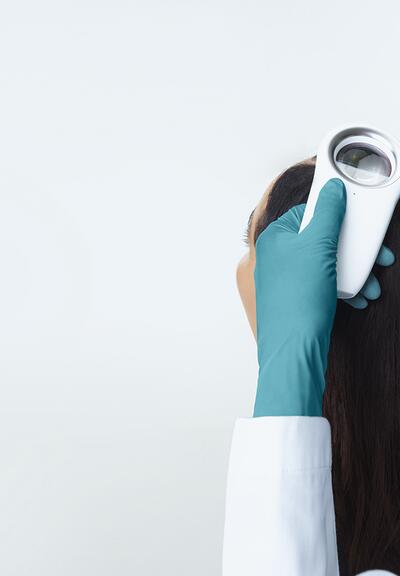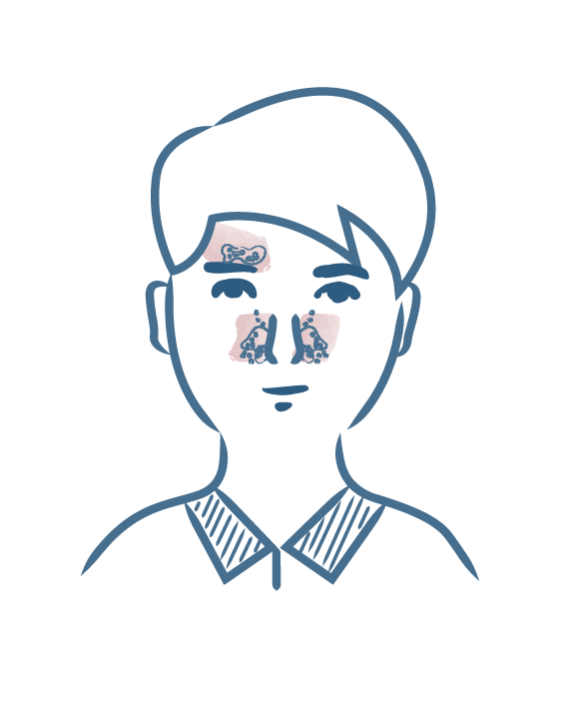Areas affected by seborrheic dermatitis
Lesions develop in the so-called "oily" areas of the skin, where sebum secretion is greatest. The areas most affected are the scalp, the furrow between the nose and cheeks (also known as the nasolabial fold), as well as the eyebrows and the space between them, and the torso. Seborrheic dermatitis is not always limited to a single area and can affect several locations in the same patient.
Seborrheic dermatitis on the scalp
Seborrheic dermatitis on the scalp is the most common form of the disease. In 95% of cases(1) of seborrheic dermatitis, the scalp is affected, alone or in combination with other areas (face, torso, etc.).
It is characterized by widespread desquamation, with the presence of oily, yellowish, sticky dandruff on the hair, often associated with excess sebum, erythema or redness and very intense itching. However, it may also appear as simple dandruff on the scalp.
Seborrheic dermatitis on the face
Seborrheic dermatitis on the face is the most visible form of the condition. It is less common than seborrheic dermatitis of the scalp (95% of cases (1)) but the face is still affected in more than 60% of cases (1) of the condition. Scales or small plaques of skin, of varying size, are oily and sometimes crusted. Itching on the face is less intense than on the scalp.
Seborrheic dermatitis on the torso
Seborrheic dermatitis on the torso is much less frequent than seborrheic dermatitis on the face (60% of cases(1)) or on the scalp (95% of cases(1)). It represents about 30% of cases of the disease(1). It causes red, scaly plaques in the middle of the chest and, more rarely, on the back.


















